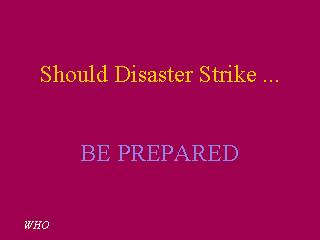|
|
|
|
front
|1
|2
|3
|4
|5
|6
|7
|8
|9
|10
|11
|12
|13
|14
|15
|16
|17
|18
|19
|20
|21
|22
|23
|24
|25
|26
|27
|28
|29
|30
|31
|32
|33
|34
|35
|36
|37
|38
|
 |
The epidemiologic study of disasters is a relatively new area of research. Although there are strong concerns regarding the quality of existing mortality and morbidity data, unique patterns of death and injury have been noted by the type of disaster occu
rring. The analysis of past disasters provides several clues to the reduction of mortality and morbidity from future events. Future research in the epidemiology of disasters will likely focus on improving the surveillance of mortality and injuries relat
ed to disasters.
Other information: Federal Emergency Management Agency Preparedness Information |